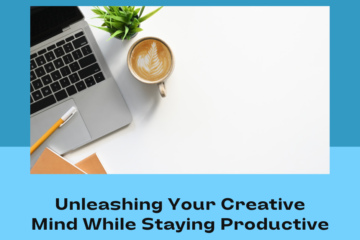
Introduction:
Cultivating creativity is a quest many embark upon, but only a few really succeed. Creativity is the invisible force behind all ground-breaking inventions, thought-provoking art, and new ideas. It is the lifeblood of growth and innovation. We all have this mysterious ability to see connections between different ideas and imagine things that have never been seen before. However, the ups and downs of daily life routines, along with social rules and old ways of thinking, can make it hard to see creatively. Even though these things get in the way, it is possible to create a mental and physical place where creativity can grow freely with hard work and the right tools. As you read this guide, we’ll talk about strategies you can use right away that will not only spark your creativity but also make it stronger.
1. Grasping the True Essence of Cultivating Creativity
To be creative, you need to start by figuring out how it all works. A lot of people make the mistake of thinking that creativity is only found in the arts, like artists, writers, and musicians. On the other hand, imagination covers a lot more ground. It’s what makes a thinker see patterns that others miss, a scientist come up with a theory that will change the world, or an entrepreneur think of a product that will change the market. At its core, creativity is a way of thinking that helps people in all kinds of jobs go beyond the usual, come up with new ideas, and come up with new ways to do things. By realizing that creativity is something that everyone has, we set the stage for it to grow and thrive.
2. Nurturing the Seeds of a Growth Mindset

Carol Dweck’s groundbreaking study on mindsets has changed the way we think about how people can grow and reach their full potential. In her research, she talks about the difference between having a fixed mindset, which means you think your skills are fixed, and a growth mindset, which means you think your potential can be changed. This last point of view is closely connected to developing imagination. When someone has a growth attitude, they don’t see problems as impossible to solve but as chances to learn and grow. As the fear of failing fades, a strong desire to learn and grow takes its place. People like this are more likely to go into uncharted territory, take calculated chances, and most importantly, let their huge creative potential flow. By encouraging this way of thinking, we open up a world of creative options.
3. Rekindling the Flame of Curiosity
The very heart of creativity is in the busy hallways of youth, where every turn is an adventure and every question is a chance to learn more. As kids, they aren’t limited by social rules or the fear of being judged, so they are naturally curious. They question what is already known and keep asking “why” and “how” questions about the world. This natural interest often fades as we get older because of routine and conformity. Still, to be creative, we need to wake up this sleeping flame. To really come up with new ideas, we need to temporarily put on the shoes of our younger selves, question norms, and look for the unexpected. Giving ourselves permission to be amazed, to wonder, and to always be in awe of the amazing things around us can spark new ideas and bring us back to life.
4. Embarking on Journeys of Varied Landscapes
Being stuck in places you know well might be comforting, but it doesn’t usually spark imagination. There are many new things that can stimulate you when you go beyond what you know, whether it’s through travel, learning a new skill, or diving deep into a foreign culture. Each new place we visit or skill we learn opens up new ways of thinking, new ways to solve problems, and uncharted areas of our knowledge. These different events weave together a rich tapestry of insights that push us to think outside the box and connect things that don’t seem to go together. By opening ourselves up to a wide range of experiences and points of view, we unintentionally fan the flames of our creativity, letting them grow into a raging fire of new ideas and solutions.
5. Crafting Spaces that Nourish the Imagination

An important factor in shaping how we think is the place where we live. To grow, a plant needs the right amount of sun, soil, and water. Similarly, our imagination grows when we put it in a good environment. Natural light-filled rooms wake you up and chase away the shadows of drowsiness and apathy. Art, like a picture that makes you think, a sculpture, or a piece of music that makes you feel something, can be a muse and help us be more open to ideas. Plants’ bright green color not only cleans the air, but it also adds a touch of nature, which is known to improve brain function and creativity. It’s also easier to turn fleeting ideas into real things when your desk is well-organized and has all the tools and materials you need. By carefully creating a space that is full of inspiration and possibilities, we make it possible for the highest level of creativity to grow.
6. Harnessing the Power of Collective Genius
When done right, brainstorming is less of a method and more of a magic pot where ideas mix, bubble, and change into new ways of doing things. While brainstorming is based on having random thoughts, it can reach its full potential only when certain rules are followed. First, it’s important to create an environment where no one judges others. There is a seed of promise in every idea, no matter how strange it seems. We let these seeds grow when we don’t criticize them. Adding to other people’s ideas is a lot like telling a story together: one thought leads to another, and the end result is often brilliantly surprising. Also, variety is what makes people creative. When people from different fields, skills, and backgrounds get together, they bring a mosaic of points of view. When you combine these different points of view, you get answers that are richer, more nuanced, and truly new. When we learn how to brainstorm well, we can tap into a pool of shared knowledge and inspiration.
7. Embracing the Silence within Through Mindfulness
Our minds are constantly stimulated by the steady noise and activity of modern life. Often, this noise can drown out the soft whispers of creation. Take a moment to be aware of this. Mindfulness is more than just a trendy word; it’s a whole way of looking at mental health. Mindfulness is based on meditation, which is like gently cleaning out your mind’s overfull attic. This makes room for the light of creation to shine through. Doing deep breathing exercises can help us stay in the present moment and let our ideas flow by removing worry and anxiety. A peaceful walk in the woods, on the other hand, serves two purposes. The steady beat of our feet makes a soothing background, and the kaleidoscope of sights, sounds, and smells in nature inspires our creativity. Mindfulness practices can improve our general health and make us more open to new ideas.
H2. 8. Deliberately Crafting Moments of Inspiration
8. Deliberately Crafting Moments of Inspiration

Inspiration doesn’t always come at fast speed; most of the time, creativity is like a flame that needs to be fed regularly. Having creative ideas on the spot is great, but planning intentional “creative time” into our schedules is much more helpful. Think of this as a meeting with your creative self. Setting aside specific times, like a quiet time to think of ideas in the early morning, a time to daydream in the middle of the afternoon, or a late-night drawing session, shows that we are committed to developing our creative skills. Set aside times like these and treat them like holy days, when your mind is free to wander, explore, and imagine. Over time, this practice builds a rhythm that trains the mind to be in “creative mode” at certain times. Setting aside regular time for creation not only helps us understand how important it is, but it also guarantees a steady flow of new thoughts and ideas.
9. The Power of Unplugging: Rediscovering Authentic Inspiration
We often feel digitally tired because our lives are full of screens, alerts, and a constant flow of information. Every time our devices beep, it sets off a chain of thoughts that makes it hard to concentrate and create. Here comes the power of purposefully cutting ties. It’s possible to be more creative when we disconnect from technology, even if it’s just for a short time. Taking a break from all the screens is like giving your mind a spa day—a chance to relax and clear your mind. These periods of digital detoxification, whether they last the entire weekend or just a quiet afternoon, give us a unique opportunity to engage with our surroundings, sense the pulse of life, and let our imaginations run free. This pure engagement not only changes the way we see things, but it also gives us ideas from real events. So, the next time you feel stuck, remember that getting away from technology is sometimes the best way to get in touch with your artistic side.
10. Navigating the Landscape of Failures: Lessons in Resilience and Innovation

Innovative creation doesn’t happen in a straight line; there are detours, roadblocks, and even dead ends along the way. People tend to focus on success stories more than failures, but it’s important to remember that failures are the unsung heroes of innovation tales. There are many lessons to be learned from every stumble, mistake, and loss. Accepting these mistakes doesn’t mean we should celebrate them; it means we should break them down, figure out what went wrong, and improve our approach. When you look at loss in this way, it stops being a hindrance and starts being a powerful source of inspiration. By seeing failures as chances to learn, we create an atmosphere where taking creative risks is welcomed. We start to understand that every failed experiment brings us one step closer to a solution, every rejected draft makes our work better, and every closed door pushes us to go where no one has gone before. We strengthen our creative resilience by celebrating the trip, with all of its ups and downs. This way, we come out of every challenge with new energy and a sharper, more creative lens.
Conclusion: Nurturing the Infinite Canvas of Imagination
Starting the journey of developing your talent is a very personal and life-changing event. There are a lot of different tactics and tools out there, but it’s important to remember that everyone’s creativity is different. What sparks creativity in one person might douse it in another. So, to get through this process, you need to look inside yourself, be open to trying new things, and know that there is no one-size-fits-all plan.
People often compare creativity to a wellspring. But being creative isn’t just about getting to the wellspring; it’s also about making sure it stays open. This needs to be cared for regularly, like taking care of a garden where the mind is the soil and creation is the growing plants. By making the above strategies a part of your daily routine, you’re not only planting seeds for innovation; you’re also making sure they grow into beautiful blooms.
It’s also very important to be patient with yourself as you go along this road. Being creative isn’t just about having “eureka!” times. It’s also about being still and letting ideas grow below the surface. Adding these practices to your routine will not only help you come up with new ideas, but it will also strengthen your resolve to keep exploring the vast landscapes of your mind.
Each of us is like a paintbrush in the big picture of life. It’s full of colors from our experiences, thoughts, and dreams. Let these colors flow freely as you walk through the realms of creation. Make a masterpiece that shows off your unique creative spirit. Don’t forget that every stroke, shade, and splash of color gives your work more depth. Paint with all your heart and soul, and don’t just be brave; paint without limits.



0 Comments